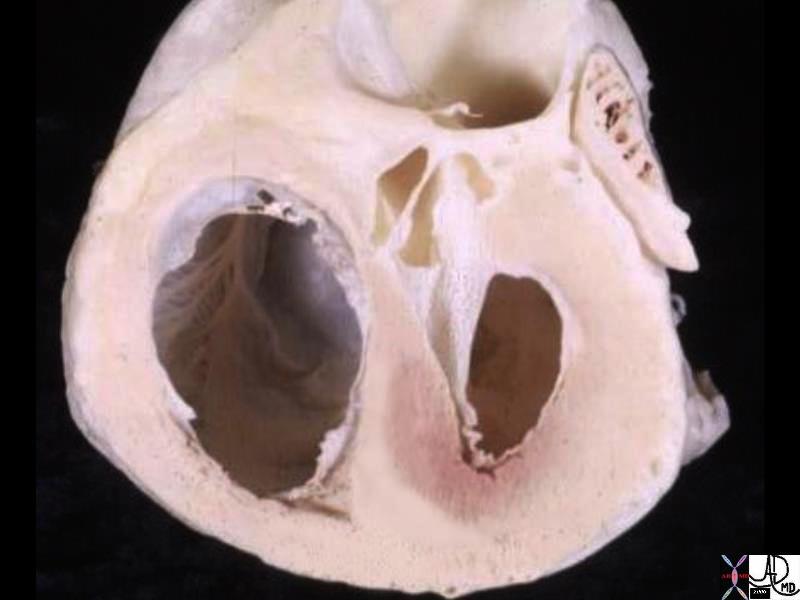Valves of the Cardiovascular System
Copyright 2009
Principles
A valve in the cardiovascular system is a device that directs the flow of a fluid by opening, closing, thus enabling forward flow and preventing backflow.
Within the cardiovascular system the opening and closing of the valves of the heart are controlled by the action of the heart. The tricuspid valve and mitral valve are geometrically designed to enable closure within the complex geometry of the ventricles. The valves of the pulmonary artery and aorta are less complex consisting of three almost leaflets. The valves of the veins are more delicate and are composed of two equal leaflets.
There are other valves and remnants of valves that include the valve of the coronary sinus called the Eustachian valve, and the foramen ovale which is part of the fetal valve within the larger structure of the fossa ovalis.
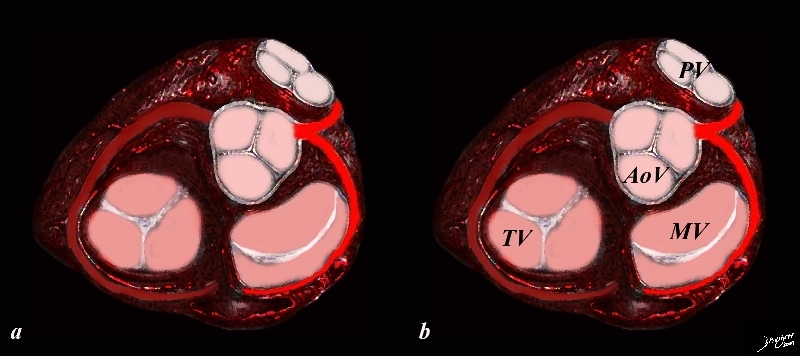
Cross section through the atrioventricular plane of the heart shows the tricuspid valve (TV), mitral valve (MV) in plane, the aortic valve (AoV) in close association with the mitral valve, and the pulmonary valve (PV). elevated and oriented toward the left
code heart cardiac valves mitral valve aortic valve tricuspid valve pulmonary valve MV AoV TV PV anatomy normal Davidoff art Image modified from Grays anatomy 1918 87268b06c01.8s
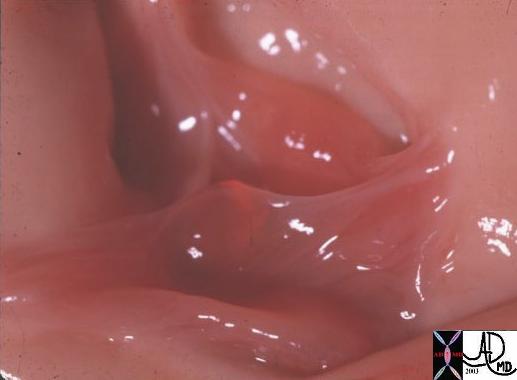
This is a post mortem specimen of a young pulmonary valve. Note how delicate the valve leaflets are.
Courtesy Ashley Davidoff MD 00245
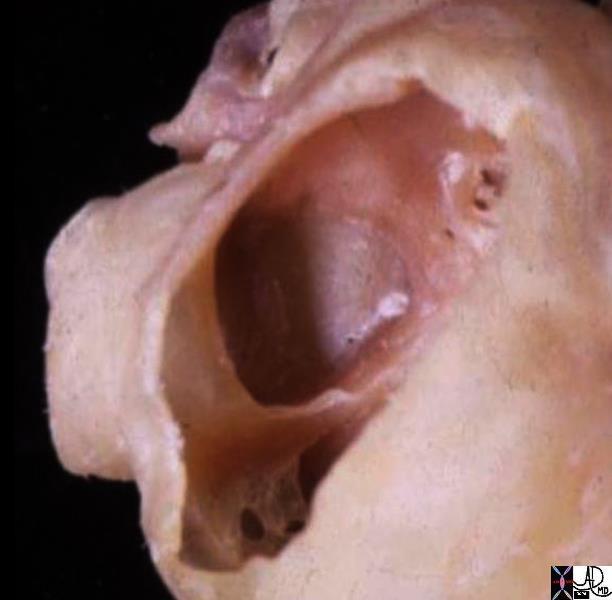
In this anatomic specimen the SVC and IVC are well seen and their lateral relationship to the right atrium is appreciated. They are embryological remnants of the sinus venosus and their similarity and conjoined structural origin and functionality can be well appreciated in this image. Davidoff MD
Key Words
heart cardiac RA right atrium thebesian valves coronary sinus Eustachian valve sulcus terminalis fossa ovalis foramen ovale septum secundum superior limbic band IVC inferior vena cava anatomy normal gross anatomy post mortem specimen
Courtesy Ashley Davidoff MD 2019 01707.6
Eustachian Valves

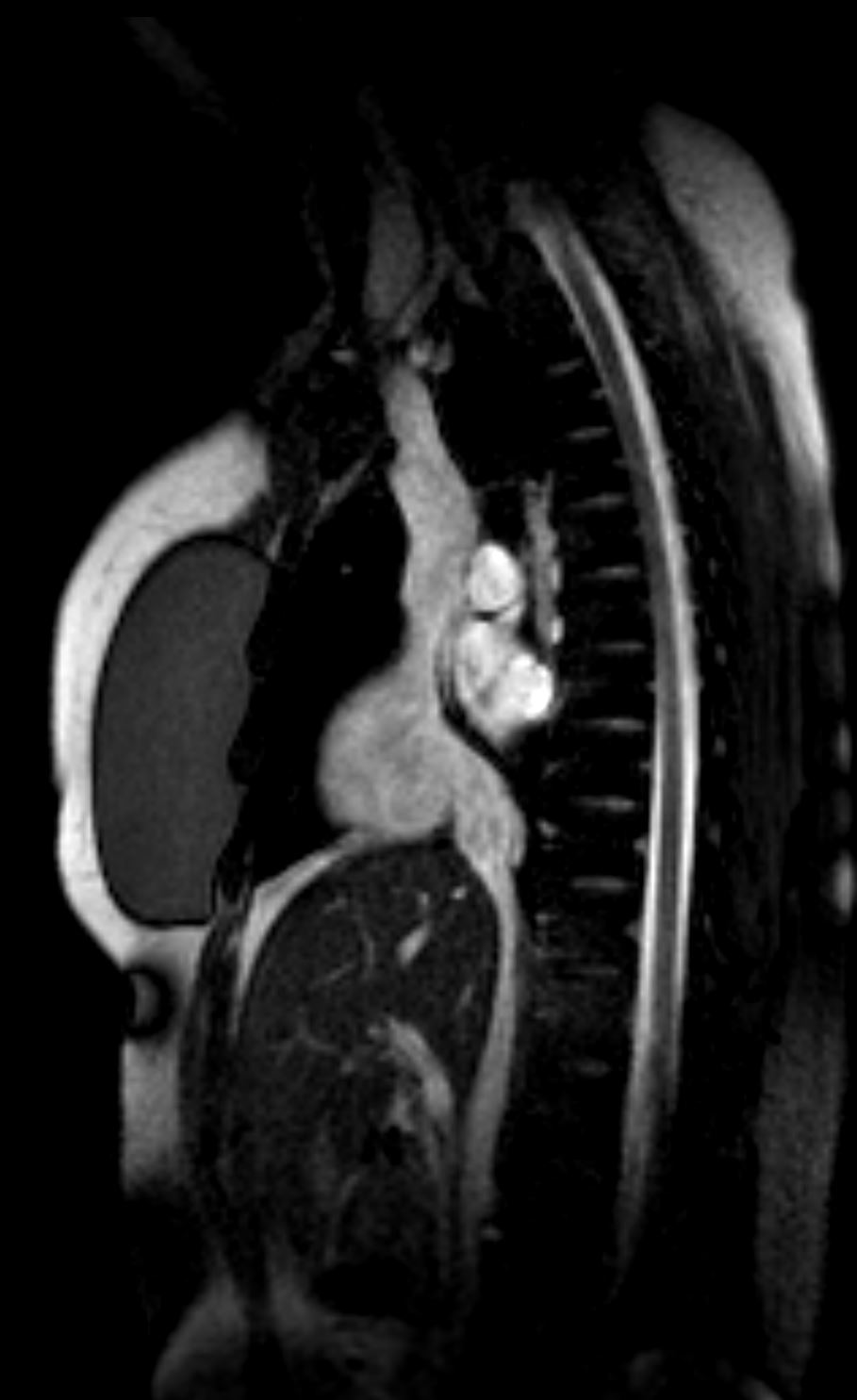
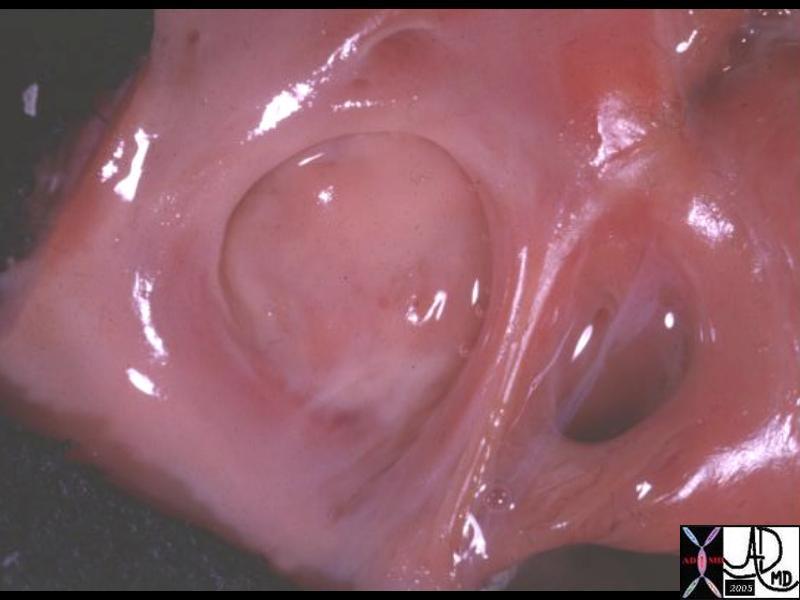
key words
heart cardiac atrial septum septum primum septum secundum sinus venosus right atrium normal anatomy coronary sinus thebesian valve Eustachian valve coronary sinus triangle of Koch atrioventricular node A-V node gross pathology
Courtesy Ashley Davidoff MD 01671
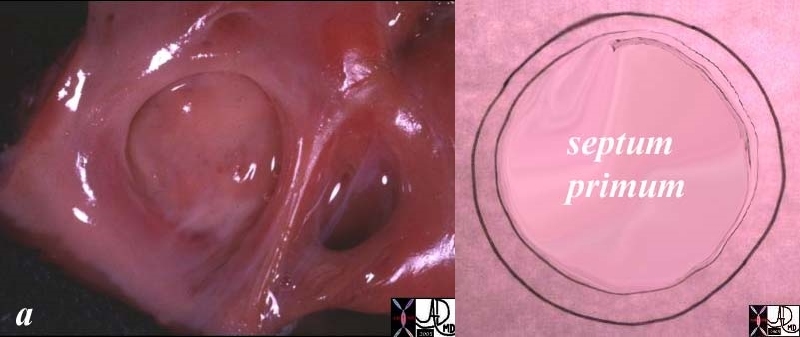

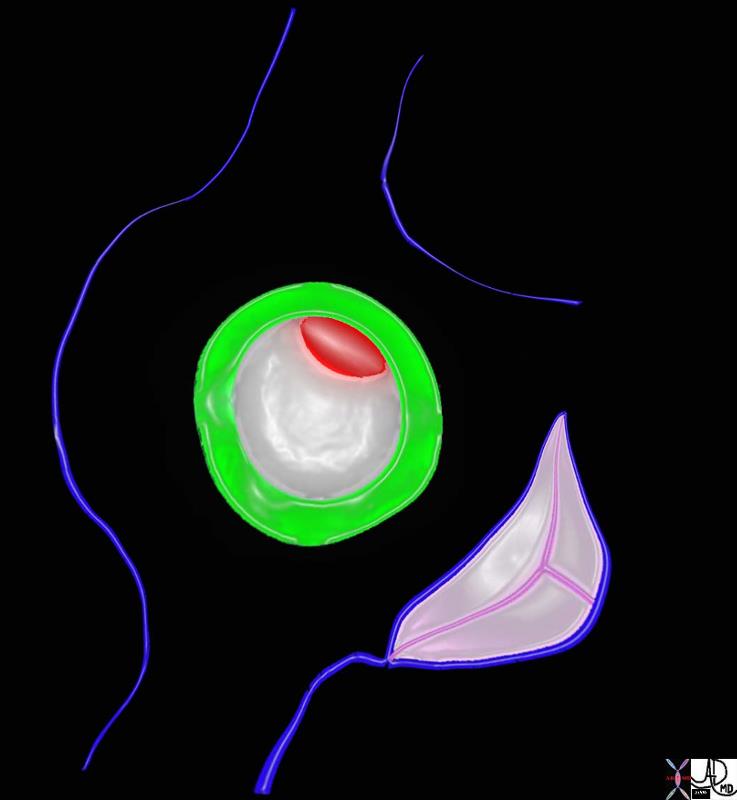
The green rim is septum secundum with the superior aspect called superior limbic band and the inferior aspect called the inferior limbic band. The white membrane is called the septum secundum, the superior aspect of which is the foramen ovale which in general closes over in later years.
key words
heart cardiac interatrial septum fossa ovalis foramen ovale superior limbic band inferior limbic band septum secundum septum primum tricuspid valve patent foramen ovale Davidoff art Courtesy Ashley Davidoff MD
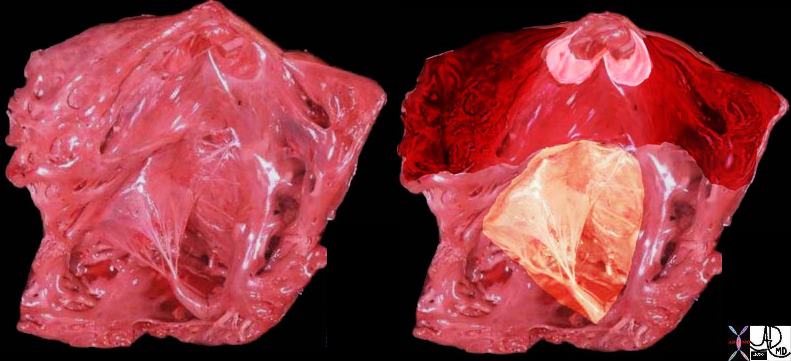
The tricuspid valve is overlaid in yellow showing the large anterior leaflet, and medially placed septal leaflet.
cardiac heart right ventricle RVOT right ventricular outflow tract parietal band septal band conal septum papillary muscle of Lancisi conal papillary muscle anterolateral papillary muscle pulmonary valve pulmonary artery ventricular septum trabeculae carnii normal anatomy gross anatomy Davidoff MD 06409c01

Tricuspid Valve and Pulmonary Valve
The first diagram is a simple drawing of the right ventricle as seen in a frontal projection. The tricuspid valve is to the right (patient position)and inferior and the pulmonary valve to the left and superior. The arrows of the second diagram show the inflow portion of the right ventricle and the outflow portion. The third and last diagram shows the two chambers that make up the right ventricle. The right ventricular inflow chamber also called the RV sinus is triangular and in orange while the outflow chamber is more tubular or cylindrical and has been called many names – but somehow it does not seem to care. Right ventricular outflow tract (RVOT), and infundibulum seem to be the most popular. Courtesy of Ashley Davidoff M.D. 32087 06610 b trio
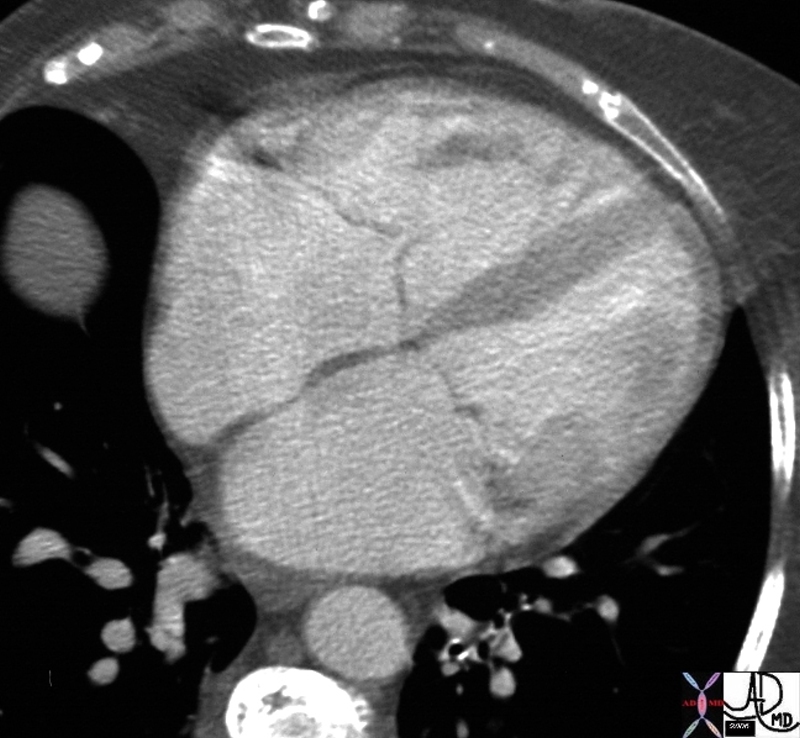
CT scan
Two leaflets of the tricuspid valve are well demonstrated in the CT cross section of the heart.
27531b01 CTscan Davidoff MD
|
|
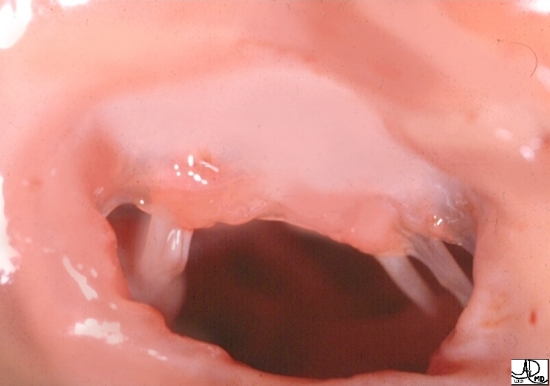
The anatomic specimen taken from the left atrium through the mitral annulus shows the broad anterior leaflet of the mitral valve ..
Courtesy of Ashley Davidoff M.D. code cardiac heart normal MV mitral valve anatomy 32106

Ashley Davidoff MD

